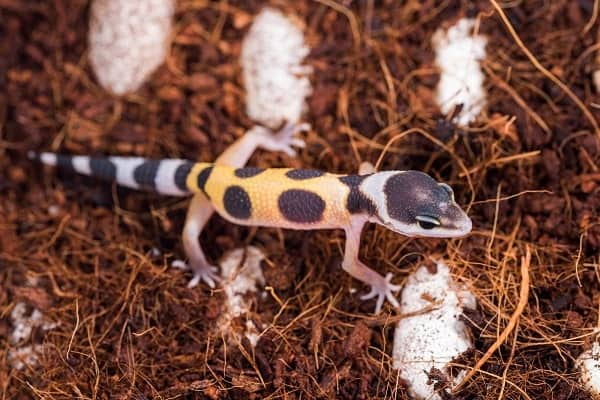
The Essential Guide to Caring for a Baby Leopard Gecko
Leopard geckos, known for their captivating patterns and docile nature, have become increasingly popular as pets. As a new leopard gecko owner, it’s crucial to provide your tiny companion with the optimal care to ensure its well-being and longevity. This comprehensive guide will delve into every aspect of baby leopard gecko care, empowering you to create a thriving environment for your scaled friend.
Housing
- Enclosure: A 10-gallon tank is suitable for a baby leopard gecko. As it grows, upgrade to a 20-gallon tank.
- Substrate: Use a non-adhesive substrate such as paper towels, reptile carpet, or calcium sand. Avoid sand, as it can cause impaction.
- Hide: Provide two hides, one warm and one cool, to allow your gecko to thermoregulate.
- Lighting: Leopard geckos are nocturnal, so they don’t require UVB lighting. However, provide a low-wattage heat lamp for warmth.
- Temperature: Maintain a temperature gradient of 75-85°F (24-29°C) on the warm side and 65-75°F (18-24°C) on the cool side. Use a thermometer to monitor temperatures.
Feeding
- Diet: Baby leopard geckos should be fed small insects such as crickets, mealworms, and dubia roaches. Dust insects with calcium powder twice a week.
- Frequency: Feed your gecko every other day, offering 5-10 insects per feeding.
- Water: Provide a shallow water dish filled with fresh water at all times.
Health and Hygiene
- Shedding: Leopard geckos shed their skin regularly. Provide a humid hide by placing a damp paper towel inside to aid in shedding.
- Bathing: Bathe your gecko every few months in lukewarm water to remove dirt and debris.
- Veterinary Care: Establish a relationship with a reptile veterinarian for regular checkups and any health concerns.
Handling
- Frequency: Handle your gecko sparingly, especially during the first few weeks.
- Technique: Support your gecko’s body with one hand and gently lift it with the other. Avoid grabbing its tail, as it can break off.
- Duration: Keep handling sessions short, around 5-10 minutes.
Enrichment
- Climbing: Provide branches or rocks for your gecko to climb on.
- Hiding: Offer various hides to satisfy your gecko’s natural instinct to seek shelter.
- Exploration: Create a stimulating environment with plants, tunnels, and other objects for your gecko to explore.
Specific Considerations for Baby Leopard Geckos
- Growth: Baby leopard geckos grow rapidly, so monitor their size and adjust their feeding and housing accordingly.
- Tail Loss: Baby leopard geckos can lose their tails as a defense mechanism. If this happens, keep the wound clean and consult a veterinarian.
- Socialization: Baby leopard geckos are solitary creatures and should not be housed together.
Conclusion
Caring for a baby leopard gecko is a rewarding experience that requires dedication and attention to detail. By following the guidelines outlined in this guide, you can provide your tiny companion with the optimal environment to thrive. Remember to prioritize your gecko’s health, well-being, and enrichment to ensure a long and fulfilling life together.
